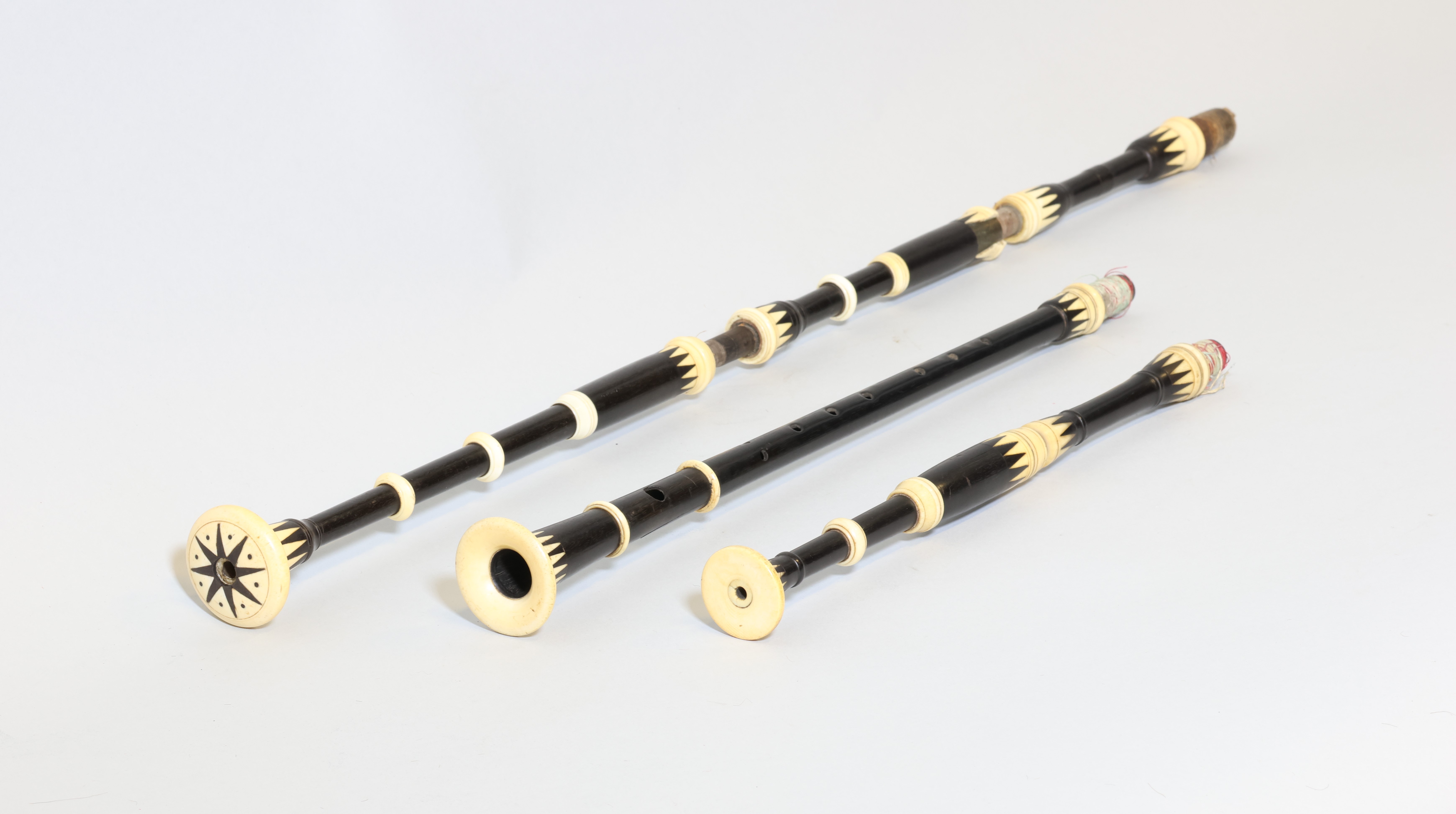Cornemuse
Joseph Bechonnet French
Not on view
This bagpipe has the characteristics of a bagpipe from Central France. Aside from the goat’s head and the hairy goat-skin bag, the work on the pipes resembles that of Joseph Béchonnet (1820-1900), a virtuoso bagpipe maker from Effiat in the Puy-de- Dôme, France (Chassaing 2015). It a visually powerful instrument, very well made, with fine workmanship demonstrated throughout the instrument. The bagpipe features a parallel chanter and tenor drone, fitted in a common stock, with a separate bass drone and an air source provided by bellows, clearly marking it as an instrument from central France. The drones, chanter, and airpipe are all intricately decorated with rings and a serrated inlaid pattern, creating a visual contrast between the dense black ebony and the delicate ivory or antler rings and points. The fingerholes are slightly scalloped to accommodate the musician’s fingers and the tenor drone both emerge from an exquisitely carved goat head with 16 tiny ivory teeth. The goat’s forehead is branded with a circular inlay of ivory and mother of pearl, complete with a miniature buck in the center.
This instrument was purchased in 1895 by Mary Elizabeth Brown from the Count Eugène de Bricqueville. The instrument had been in the Count’s collection and was one of his prized possessions. This instrument was probably made in the second half of the nineteenth century and purchased by Bricqueville through a broker to add to his collection of period instruments (Balosso-Bardin 2024).
(Cassandre Balosso-Bardin, 2023)
Technical Description
Conical single chanter of black wood 474 mm, 7/1 holes, the bottom hole doubled, 2 ventholes, reed missing (typically cane double reed on metal staple);
Bass drone in 3 sections 712 mm, tenor a closed cylinder of red wood with cane tongue, tenor reed missing; 5-fold green and red leather bellows with 2 boards of black wood, blue velvet body straps, leather valve;
Sewn goatskin bag with hair on the exterior;
Ivory mounts inlaid with triangles of black wood;
2 cylindrical black wood stocks for bellows and bass drone;
Chanter and tenor drone stock a carved goat's head with inlaid mother-of-pearl circle on forehead ornamented with ivory carved goat's head, leather ears, ivory teeth encircled by brass ring to form "mouth" (stocks);
8-point star of black wood on bass drone bell cap;
11-point star of mother-of-pearl inlaid on bellows board;
References
Balosso-Bardin, Cassandre, 2024. ‘The travelling goat: provenance story of a bagpipe’. Enduring Rhythms. New York: Metropolitan Museum of Art.
Chassaing, Jean-François, 2015. Béchonnet et les cornemuses en France. Jenzat: Centre de recherche sur les musiques traditionnelles.
Due to rights restrictions, this image cannot be enlarged, viewed at full screen, or downloaded.
This artwork is meant to be viewed from right to left. Scroll left to view more.




